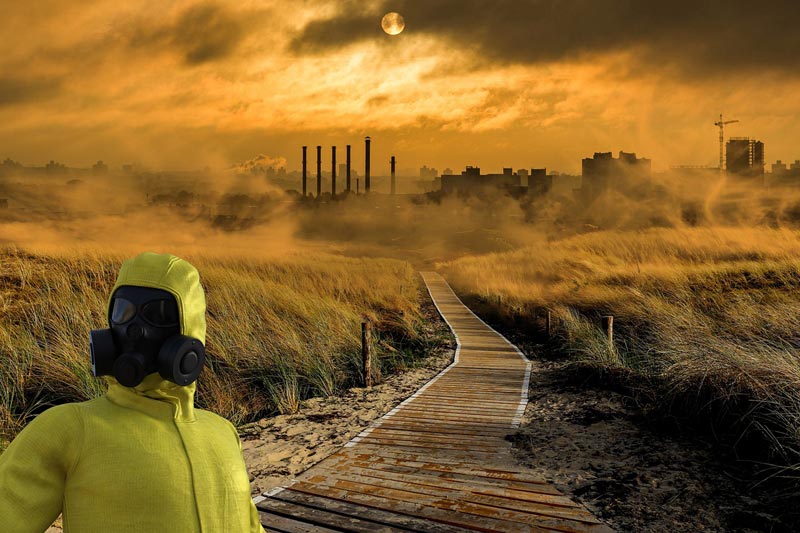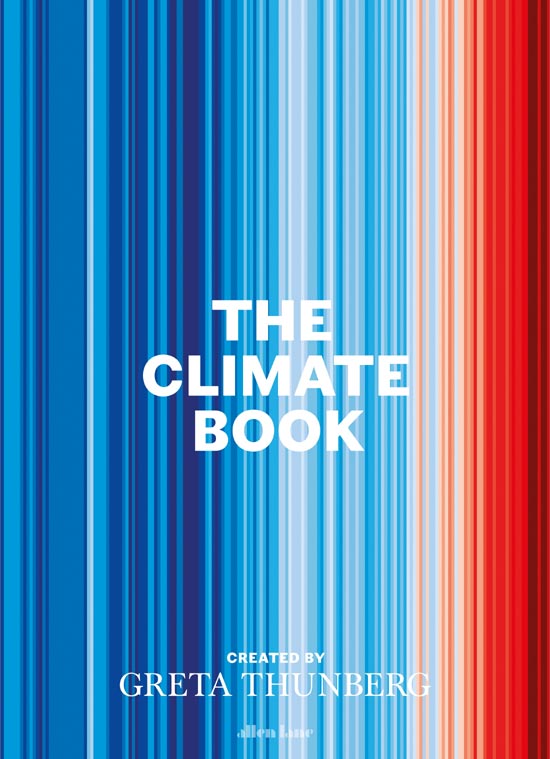Showing all posts about climate change
Rising humidity levels are making heatwaves unbearable
31 July 2023
Heatwaves, which have been experienced in a number of regions in the northern hemisphere in recent weeks, are being aggravated by increased levels of humidity, which is being precipitated by climate change. While it might be thought higher temperatures would cause moisture to evaporate, warmer air is capable of holding more water vapour than cooler air.
Sea surface temperatures have been steadily climbing globally, as the oceans absorb something like 90 percent of the excess heat that humans are adding to the atmosphere. But since March, global sea surface temperatures have been skyrocketing above the norm. The North Atlantic, in particular, remains super hot, loading Europe’s air with extra humidity.
Parts of the east coast of Australia saw higher levels of humidity last week, which had the effect of “taking the bite” out of otherwise relatively cooler temperatures. That’s about the only instance when high humidity has an upside. Those sorts of humidity levels will be far from welcome come summer.
RELATED CONTENT
climate change, current affairs, environment
Global boiling replaces global warming as world swelters through July
28 July 2023
The world has sweated through its hottest three weeks on record, as heatwaves continue to ravage parts of the northern hemisphere. Possibly the last time temperatures were this warm was one hundred thousand years ago.
Typically these records, which track the average air temperature across the entire world, are broken by hundredths of a degree. But the temperature for the first 23 days of July averaged 16.95 degrees Celsius (62.51 Fahrenheit), well above the previous record of 16.63 degrees Celsius (61.93 Fahrenheit) set in July 2019, according to the report.
I’m dreading the upcoming Australian summer. As I type, the forecast high today is 23° Celsius, in this part of the world the July (middle of winter) average is meant to be closer to about 16° Celsius.
RELATED CONTENT
climate change, current affairs, environment
Monday 3 July 2023, hottest recorded day in the world
7 July 2023
Temperatures on Monday reached an average of 17.01 Celsius, up from the previous high of 16.92 Celsius, recorded in August 2016. This as parts of the United States, China, and Africa, have sweltered through oppressive heatwaves in recent weeks.
RELATED CONTENT
Gaia, symbol of climate change failure, in Every Version of You, by Grace Chan
5 June 2023

Image courtesy of Pete Linforth.
Warning: spoilers ahead. Return to this article once you’ve finished reading the novel.
Every Version of You, published by Affirm Press in 2022, is the debut novel of Melbourne based Australian author Grace Chan. Set in the late twenty-first century, primarily in Melbourne, Chan’s novel is about a young couple, Tao-Yi and her boyfriend Navin, and a momentous decision they need to make, which has life changing consequences.
Climate change has rendered Earth almost uninhabitable. Outdoor activities have become uncomfortable and dangerous. People need to don protective clothing and equipment before leaving the cocoon-like sanctuary of their dwellings. Body suits to block the Sun’s burning rays. Goggles and facemasks to combat dust, and other airborne irritants.
But the creation of a would-be new world, a “hyper-immersive, hyper-consumerist virtual reality” named Gaia, offers humanity an alternative to the world outside. And while this digital, artificial, macrocosm, mimics the old world in virtually every way, it also offers inhabitants a whole lot more.
Accessing Gaia, called logging in, is facilitated by climbing into a small, diving bell like chamber, filled with a gel-like liquid, called a neupod. While people’s bodies lie immersed in the pod’s gel, their minds roam free in Gaia, and they go about their lives, as normal. Except here, their presence takes the form of a digital avatar, one they are able to continually customise.
They go to work and school. They see friends and family. They engage in sporting and recreational activities. People “live” in Gaia just as they do in the real, outside, world. But within its realm, people can do more than live their old lives. They can venture to places they once only dreamed of, and become someone they could never have been otherwise.
Gaia, a promise of eternal life, but at a cost
Like everyone else, Tao-Yi and Navin switch back and forth between Gaia and the outside world, although Navin spends more time in Gaia than Tao-Yi. But one day a technology emerges allowing people to permanently meld with Gaia, through a process called “Uploading”.
In essence, Uploading, also known as mind uploading, allows a person to live forever within Gaia’s seemingly boundless domain. But there is a crucial caveat. Once uploaded, a person cannot return to the old world. Not, at least, as a corporeal entity. Uploading transforms a person into a conscious digital entity, through a procedure that extracts their every thought, memory, and personality.
A person’s no longer needed body is disposed of in manner they choose beforehand, once Uploading is completed. Despite Tao-Yi’s misgivings, Navin was a keen proponent. And not just because he saw himself as an early adaptor. Navin was also afflicted with a chronic illness, one that medicine could not alleviate. Uploading would allow Navin to live disease free.
And there were doubtless others in Navin’s position. Medical science could offer these people no hope, but Uploading, and becoming a digital version of themselves, would completely eliminate their ailments. For some, the decision to Upload was easy to make. They could enjoy full “health”, and also be free of the ravages of climate change. To say nothing of “living” forever.
Although in a minority, there were people — called holdouts — who refused to Upload. They wished to remain in the “meatspace”, a derogatory term given to the old world. Xin-Yi, Tao-Yi’s mother, was among them. And even Tao-Yi — for the benefits Uploading bestowed upon Navin — was far from convinced that permanently merging with Gaia was the right thing to do. And for good reason.
Gaia, a symbol of climate change denial
Tao-Yi knew Gaia was not a solution to climate change, only a means by which to escape it. To her, and other holdouts, Gaia was humanity’s way of signalling defeat in the battle to restore Earth’s environment to the way it once was. But not only that. Gaia, while being heralded as a new beginning for humanity, also potentially spelt the end of the line for humans.
Aside from a small number of holdouts braving life in the near inhospitable real world, all of humanity’s eggs were in the single basket that was Gaia. Its digital inhabitants had condemned themselves to eternal imprisonment on Earth. Gaia also left humanity all the more vulnerable to some sort of planet-wide calamity, such as the asteroid impact that brought about the end of the dinosaurs.
It was be hoped the tech savvy denizens of Gaia would eventually figure out a way to leave Earth, and at least put down roots elsewhere in the solar system. If not beyond. But a global catastrophe was not the only danger facing Gaia. The digital realm also depended on an army of (presumably self-replicating) robots to maintain its infrastructure.
There would be the hope the robots continued to serve, and replace themselves. But what if these maintenance droids infused themselves with an intelligence of their own? And what if they one day turned against their digital masters, and pulled the plug on them?
Some of these concerns — and could they be the basis for a sequel, or even an Every Version of You expanded universe? — are alluded to in the novel, even if they are beside the point. Gaia is a potent symbol of climate change denial, and the unwillingness, by some people, to do anything about it. Gaia might promise eternal life, but that could be an eternity spent regretting sacrificing Earth to climate change.
Gaia, why does the name sound familiar?
In Greek mythology Gaia is the goddess of Earth, and the mother of all life. She is one of the “primordial deities”, the first generation of Greek gods, and the grandmother of Zeus, god of sky and thunder, and later king of the cosmos, and the other Greek gods.
As a name for the digital realm humanity withdraws to, Gaia may also derive from the Gaia hypothesis, which was formulated by late British scientist and futurist James Lovelock in the 1970s. His theory proposes “living organisms interact with their inorganic surroundings on Earth to form a synergistic and self-regulating, complex system that helps to maintain and perpetuate the conditions for life on the planet.”
In Every Version of You, humanity has well and truly failed to “maintain and perpetuate the conditions for life on the planet.” But by creating a new, artificial, domain named Gaia, perhaps the people of the late twenty-first century — up to their eyes in denial — could claim to have succeeded in achieving this goal.
RELATED CONTENT
books, climate change, climate fiction, Grace Chan, science fiction
The Climate Book by environmental activist Greta Thunberg
3 November 2022

The Climate Book, written by Swedish environmental activist Greta Thunberg, and published this month by Penguin Books, sets out the facts about climate change, and outlines solutions for dealing with it. As Thunberg says, we need to act now, if we want to make a difference.
In The Climate Book, Greta Thunberg has gathered the wisdom of over one hundred experts – geophysicists, oceanographers and meteorologists; engineers, economists and mathematicians; historians, philosophers and indigenous leaders – to equip us all with the knowledge we need to combat climate disaster. Alongside them, she shares her own stories of demonstrating and uncovering greenwashing around the world, revealing how much we have been kept in the dark. This is one of our biggest challenges, she shows, but also our greatest source of hope. Once we are given the full picture, how can we not act? And if a schoolchild’s strike could ignite a global protest, what could we do collectively if we tried?
RELATED CONTENT
climate change, environment, Greta Thunberg
Ocean heat absorption highest in waters around Antarctica
12 September 2022
While all the world’s oceans are absorbing some degree of heat, and somewhat moderating the rate of global warming, the Southern Ocean, being the waters that generally surround Antarctica, is soaking up the most excess warmth.
Ocean warming buffers the worst impacts of climate change, but it’s not without cost. Sea levels are rising because heat causes water to expand and ice to melt. Marine ecosystems are experiencing unprecedented heat stress, and the frequency and intensity of extreme weather events is changing. Yet, we still don’t know enough about exactly when, where and how ocean warming occurs.
Even if carbon dioxide emissions ceased overnight, it could thousands of years for heat trapped in the oceans to be released again.
RELATED CONTENT
Greenland ice cap melt inevitable sea levels may rise 27cm
31 August 2022
We’re passed the time for warnings… a significant increase in sea levels is unavoidable, with the melting of the Greenland ice cap expected to add twenty-seven centimetres to global ocean tidemarks. It could be a whole lot more if (or when) other ice masses melt:
Major sea-level rise from the melting of the Greenland ice cap is now inevitable, scientists have found, even if the fossil fuel burning that is driving the climate crisis were to end overnight. The research shows the global heating to date will cause an absolute minimum sea-level rise of 27cm (10.6in) from Greenland alone as 110tn tonnes of ice melt. With continued carbon emissions, the melting of other ice caps and thermal expansion of the ocean, a multi-metre sea-level rise appears likely.
RELATED CONTENT
climate change, environment, nature
Climate change aggravates the spread of infectious diseases
15 August 2022
In the same week a reminder that climate change exasperates the emergence and spread of infectious diseases is issued, news that polio has been detected in New York sewage, and an instance of a virus, Langya henipavirus, spreading from animals to humans in China, are reported. This on top, of course, of COVID, and the more recent Monkeypox outbreak.
The continual release of greenhouse gases (GHGs) is escalating several climatic risks, which, in turn, worsen human pathogenic illnesses. The severe acute respiratory syndrome coronavirus 2 (SARS-CoV-2) pandemic, which amply demonstrated the social upheaval driven by infectious diseases, offers alarming hints to the possible outcomes of impending health crises caused by climate change.
RELATED CONTENT
climate change, environment, health
Forests now cover two percent of Iceland thanks to replanting
22 July 2022
In the distant past, forests and trees covered large parts of Iceland, about forty percent of the country. But when permanent settlers arrived over a thousand years ago, much of this growth was cleared to make way for agriculture and grazing, and firewood. Efforts to replant trees since the 1990s though have seen forest areas return to two percent of the country today.
That number may not seem like much, but since 1990, the surface area covered by forest or shrubs in Iceland has increased more than six times over – from 7,000 hectares to 45,000. In 20 years, the number is expected to be 2.6%.
Every little bit helps. It’s a hopeful reminder that it’s not too late to take steps of any sort to deal with climate change.
RELATED CONTENT
climate change, environment, Iceland, nature
Don’t plant trees to combat climate change plant mini-forests
15 July 2022

Image courtesy of 二 盧/uniquedesign52.
Planting trees is one way of mitigating the impact of climate change, but planting mini-forests is a more effective alternative, says American nature and conservation writer Hannah Lewis.
Mini-forests are more likely to nurture ecosystems, rather than single trees planted here and there, and, as a result, live longer. And better still, mini-forests can be established anywhere, even in densely populated urban areas, where there’s even a few spare square metres of land available.
A mini-forest is a small ecologically robust forest that can be planted by communities in parks and cities, in schoolyards and churchyards, and beside busy roads. It’s flipped traditional landscaping on its head. You get more biodiversity and a different appearance. It’s a dense band of multi-layer trees as opposed to the elegant but less ecologically useful line of single species down the side of the street.
Lewis’ call is based on the work of late Japanese botanist Akira Miyawaki, who advocated the planting of small forests with native species, as a way of fostering the emergence of ecosystems.
RELATED CONTENT
